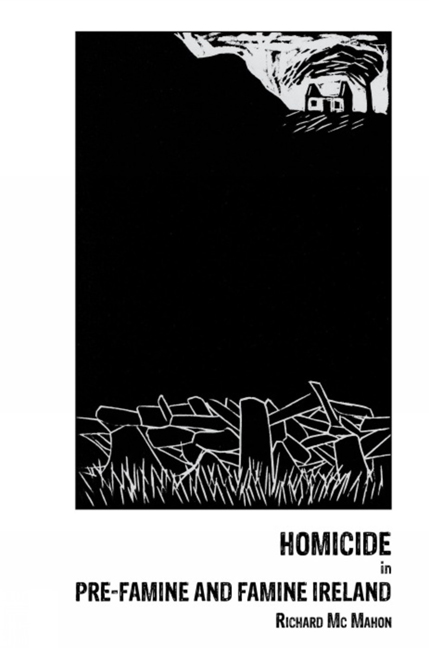Book contents
- Frontmatter
- Dedication
- Contents
- List of tables and figures
- Preface
- ‘A violent society’?
- 1 Homicide rates in Ireland, 1801–1850
- 2 ‘Do you want to pick a fight out of me?’: Homicide and personal relations
- 3 ‘Sending them to heaven’: Homicide and the family
- 4 ‘The tranquillity of a barrel of gun powder’: Homicide and land
- 5 ‘The madness of party’: Homicide and sectarianism
- Conclusion
- Appendix one: Methods and sources
- Appendix two: Homicide and motive
- Bibliography
- Index
Preface
- Frontmatter
- Dedication
- Contents
- List of tables and figures
- Preface
- ‘A violent society’?
- 1 Homicide rates in Ireland, 1801–1850
- 2 ‘Do you want to pick a fight out of me?’: Homicide and personal relations
- 3 ‘Sending them to heaven’: Homicide and the family
- 4 ‘The tranquillity of a barrel of gun powder’: Homicide and land
- 5 ‘The madness of party’: Homicide and sectarianism
- Conclusion
- Appendix one: Methods and sources
- Appendix two: Homicide and motive
- Bibliography
- Index
Summary
Was pre-Famine and Famine Ireland a violent society? The dominant view among a range of commentators at the time, and in the work of many historians since, is that violence was both prevalent and pervasive in the social and cultural life of the country. This book explores the validity of this perspective through the study of homicide and what it reveals about wider experiences of violence in the country at that time. The book provides a quantitative and contextual analysis of homicide in pre-Famine and Famine Ireland. It explores the relationship between particular and prominent causes of conflict – personal, familial, economic and sectarian – and the use of lethal violence to deal with such conflicts. Throughout the book, the Irish experience is placed within a comparative framework and there is also an exploration of what the history of violence in Ireland might reveal about the wider history of interpersonal violence in Europe and beyond. The aim throughout is to challenge the view of nineteenth-century Ireland as a violent society and to offer a more complex and nuanced assessment of the part played by violence in Irish life.
My debts are many. I would like to thank An Roinn Dlí agus Cirt agus Comhionannais/ the Department of Justice and Equality and the Irish Legal History Society for funding the original thesis on which this book is based. The thesis was supervised by Professor W.N. Osborough of the School of Law at University College Dublin and Professor Desmond Greer of the School of Law at Queen's University Belfast. I owe a great debt to both for sharing their knowledge of and enthusiasm for Irish history with me. I am also grateful for the additional funding and conducive working environment provided by the Moore Institute for Research in the Humanities and Social Studies at the National University of Ireland, Galway, which enabled me to continue my research there. In particular, I would like to take the opportunity to thank the then Director of the Institute, Nicholas Canny, and the project leader, William O'Reilly. I would also like to thank Gearóid Ó Tuathaigh for his support at that time.
- Type
- Chapter
- Information
- Homicide in pre-Famine and Famine Ireland , pp. xi - xivPublisher: Liverpool University PressPrint publication year: 2013



